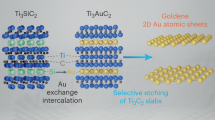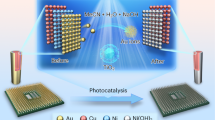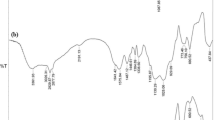Abstract
A WIDE range of diatomic compounds of gold is now known, either through observations of their thermal emission or absorption spectra, or through mass spectrometric studies of high-temperature equilibria1. The former work provides information about the electronic energy states, and in favourable cases gives values of the bond-lengths, while the latter yields values of the dissociation energies. The purpose of this communication is to give the results of recent spectroscopic work on AuBe, AuMg, AuGa, AuSi and AuGe.
This is a preview of subscription content, access via your institution
Access options
Subscribe to this journal
Receive 51 print issues and online access
$199.00 per year
only $3.90 per issue
Buy this article
- Purchase on SpringerLink
- Instant access to full article PDF
Prices may be subject to local taxes which are calculated during checkout
Similar content being viewed by others
References
Barrow, R. F., and Travis, D. N., Proc. Roy. Soc., A, 273, 133 (1963). Schiltz, J., Ann. de Phys., 8, 67 (1963).
Author information
Authors and Affiliations
Rights and permissions
About this article
Cite this article
BARROW, R., GISSANE, W. & TRAVIS, D. Electronic Spectra of some Gaseous Diatomic Compounds of Gold. Nature 201, 603–604 (1964). https://doi.org/10.1038/201603a0
Issue date:
DOI: https://doi.org/10.1038/201603a0
This article is cited by
-
Magnetic Silicon Fullerenes: Experimental Exploration and Theoretical Insight
Journal of Cluster Science (2016)
-
Bestimmung der Dissoziationsenergien der gasf�rmigen Molek�le CuGe, AgGe und AuGe
Monatshefte f�r Chemie (1972)



